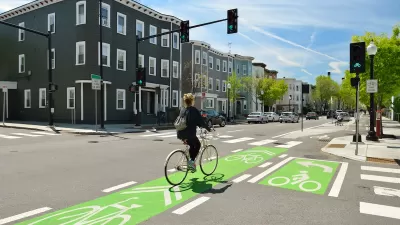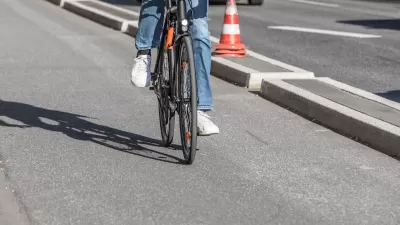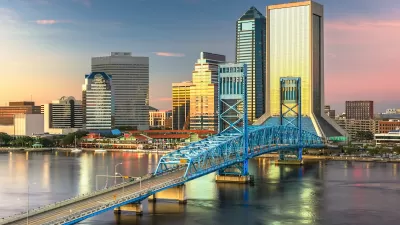After the death of a well-known Indianapolis cyclist and growing pedestrian death rates, the city expanded on its 2012 Complete Streets ordinance to highlight equity and renew efforts to make streets safer.

An article by Kayla Dwyer in the Indianapolis Star highlights the Indianapolis City Council’s renewed efforts to implement a Complete Streets policy. Originally passed in 2012, the city’s Complete Streets ordinance “drifted to the background.” Now, with pedestrian death rates rising and the death of a prominent local cyclist, the city council has issued updates to the policy. “The revised ordinance, adopted by the council Monday night, gets far more specific, and includes an expanded emphasis on transparency and equity.”
The legislation calls for applying Complete Streets principles to all types of projects and adds new performance metrics and reporting requirements. “[City-County Councilor John Barth] said the intention behind this revised policy is to compel the department to report publicly any instances of Complete Streets elements not being implemented after the design process is complete. The revision also requires DPW to identify barriers to Complete Streets implementation and potential solutions.” The ordinance also establishes a formal process for evaluating dangerous intersections and assessing potential safety improvements.
Department of Public Works director Dan Parker says DPW supports the updates, but cautions that the department needs more sustainable funding sources to achieve its goals.
FULL STORY: Complete Streets' 2.0: Eyeing safety, Indianapolis revises 10-year-old road design policy

Planetizen Federal Action Tracker
A weekly monitor of how Trump’s orders and actions are impacting planners and planning in America.

San Francisco's School District Spent $105M To Build Affordable Housing for Teachers — And That's Just the Beginning
SFUSD joins a growing list of school districts using their land holdings to address housing affordability challenges faced by their own employees.

The Tiny, Adorable $7,000 Car Turning Japan Onto EVs
The single seat Mibot charges from a regular plug as quickly as an iPad, and is about half the price of an average EV.

As Trump Phases Out FEMA, Is It Time to Flee the Floodplains?
With less federal funding available for disaster relief efforts, the need to relocate at-risk communities is more urgent than ever.

With Protected Lanes, 460% More People Commute by Bike
For those needing more ammo, more data proving what we already knew is here.

In More Metros Than You’d Think, Suburbs are Now More Expensive Than the City
If you're moving to the burbs to save on square footage, data shows you should think again.
Urban Design for Planners 1: Software Tools
This six-course series explores essential urban design concepts using open source software and equips planners with the tools they need to participate fully in the urban design process.
Planning for Universal Design
Learn the tools for implementing Universal Design in planning regulations.
Smith Gee Studio
City of Charlotte
City of Camden Redevelopment Agency
City of Astoria
Transportation Research & Education Center (TREC) at Portland State University
US High Speed Rail Association
City of Camden Redevelopment Agency
Municipality of Princeton (NJ)





























